Section 1: Politeness and Hospitality
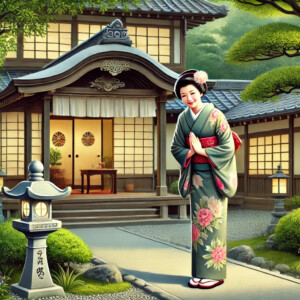
Japan’s concept of “omotenashi” (hospitality) is deeply rooted in its culture, where anticipating the needs of others and providing a comfortable experience is highly valued. From the welcoming bow at traditional ryokan inns to attentive customer service in shops, Japan’s hospitality leaves a lasting impression on visitors. The spirit of “omotenashi” goes beyond simple service; it’s about creating an environment where guests feel genuinely cared for.
Politeness and respect for others are integral to daily life in Japan. Simple gestures like bowing when greeting, actively listening during conversations, and being considerate of public spaces are commonplace. Foreign tourists are often struck by these small, thoughtful actions that accumulate to create a sense of order and harmony in everyday interactions. This high level of politeness is evident in public places, whether it’s on public transport, in shops, or at restaurants.
Japan’s hospitality is most prominent in the service industry, where meticulous attention to detail can be seen. At traditional inns, guests are welcomed with tea, seasonal flowers, and tailored service, ensuring their stay is as comfortable as possible. Restaurants are another example where high-quality service, paired with beautifully presented dishes, shows the depth of care and thought put into each dining experience.
Foreign visitors are often amazed by Japan’s orderly behavior in public spaces. For instance, commuters form lines when waiting for trains, and passengers remain quiet on public transportation to avoid disturbing others. This consideration extends to safety, as Japan is known for its clean and safe environment. Tourists also appreciate the likelihood of lost items being returned, which further exemplifies the respect and honesty embedded in Japanese society.
In conclusion, Japan’s politeness and hospitality are not just about treating guests well but are deeply woven into the country’s cultural fabric. This high standard of care and attention to others creates a unique travel experience, making Japan a memorable destination for many international tourists.
Section 2: Food Culture

Japan’s food culture is highly regarded worldwide, with dishes like sushi, ramen, and tempura becoming global favorites. Japanese cuisine emphasizes seasonality, beautiful presentation, and a healthy balance of ingredients. Visitors from around the world are often captivated by the diversity and refinement found in Japanese food, which goes beyond just flavor to offer an aesthetic and sensory experience.
Sushi is perhaps the most iconic Japanese dish. Made with fresh, high-quality seafood, sushi showcases the skill and precision of its chefs. Many tourists look forward to tasting authentic sushi during their visit, experiencing firsthand the subtle flavors and artistic presentation that only Japan can offer. Sushi bars and fine dining establishments, where chefs prepare each piece in front of the customer, offer an immersive culinary experience that is both traditional and unique.
Ramen is another popular dish that has gained a global following. Japan’s ramen culture is incredibly diverse, with regional varieties such as Sapporo’s miso ramen, Hakata’s tonkotsu ramen, and Tokyo’s soy sauce-based ramen. Tourists often enjoy exploring different ramen shops, each offering a distinctive flavor and atmosphere.
Tempura, lightly battered and fried seafood or vegetables, is also highly appreciated by visitors. Whether enjoyed at high-end restaurants or casual eateries, tempura’s crispy texture and delicate taste leave a lasting impression. Paired with dipping sauce or eaten alongside rice, tempura reflects the simplicity and elegance of Japanese cuisine.
Japanese wagyu beef is another highlight, known for its marbling and melt-in-your-mouth texture. Foreign tourists are drawn to famous brands like Kobe and Matsusaka beef, savoring the rich, buttery flavor that is considered the pinnacle of high-quality meat.
Japanese sweets, such as wagashi, are another example of the country’s attention to seasonal aesthetics. These traditional sweets are often served with matcha green tea, offering a delicate balance of flavors and a glimpse into Japan’s tea culture.
A key element of Japanese food culture is its emphasis on health and balance. Meals are often composed of small portions of various dishes, including vegetables, fish, and rice, ensuring nutritional balance. This approach to dining, combined with fresh ingredients and minimal use of oils, has contributed to Japan’s reputation for healthy eating.
In conclusion, Japan’s food culture offers more than just a meal—it provides an opportunity to experience the country’s values of craftsmanship, respect for nature, and attention to detail. Whether dining at a Michelin-starred restaurant or enjoying street food, the culinary journey in Japan is one that leaves a deep impression on travelers from around the world.
Section 3: Safety
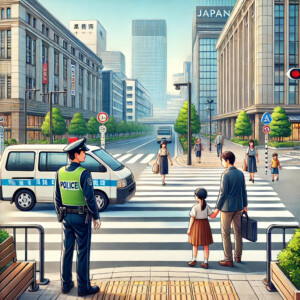
Japan is widely recognized for its low crime rate and high level of public safety, making it one of the safest countries in the world. This sense of security is something that greatly impresses foreign tourists, particularly those from countries where urban safety can be a concern. In Japan, visitors can walk the streets at night without fear, and public spaces such as parks, transportation, and city streets are generally considered very safe.
One of the most remarkable aspects of Japan’s safety is the high probability of lost items being returned to their owners. Whether it’s a wallet, smartphone, or camera, tourists are often astonished to have their belongings returned intact after misplacing them in public. This reflects the strong sense of honesty and responsibility embedded in Japanese society, where individuals take pride in maintaining the safety and order of their surroundings.
Public transportation is also a reflection of Japan’s commitment to safety and security. Trains and buses are not only punctual but also clean and well-maintained, providing a comfortable and secure environment for travelers. Even in crowded urban areas, there is a strong sense of order, with people following rules and respecting each other’s space.
Japan’s police force is highly visible and approachable, adding to the sense of security. Police officers are stationed throughout major cities and tourist areas, always ready to assist with directions or advice. Their presence contributes to the overall feeling of safety that visitors experience during their stay.
For many tourists, Japan’s safety stands out as one of the key reasons why the country is such an attractive travel destination. Families, solo travelers, and groups alike appreciate the peace of mind that comes from knowing they are in a country where crime is rare, and people look out for one another.
In conclusion, Japan’s reputation for safety is well-deserved. From the return of lost items to the secure environment of public spaces, the country’s emphasis on respect, order, and honesty creates a welcoming atmosphere for tourists. This aspect of Japanese culture leaves a lasting impression, encouraging many visitors to return for future trips.
Section 4: History and Traditional Culture
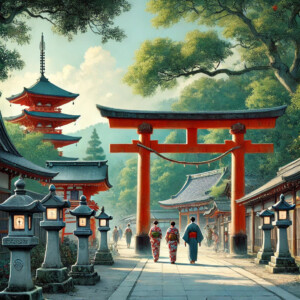
Japan’s rich history and traditional culture captivate foreign visitors, offering a glimpse into a world where ancient customs and heritage are deeply respected. Cities like Kyoto and Nara, once the capitals of Japan, are filled with historic temples, shrines, and traditional architecture that transport tourists back in time. Walking through these ancient streets, visitors can experience the spiritual and cultural heart of Japan.
Kyoto, known for its well-preserved cultural sites, is home to numerous UNESCO World Heritage sites, including the golden Kinkaku-ji (Golden Pavilion) and the iconic Fushimi Inari Shrine with its thousands of red torii gates. These landmarks represent Japan’s spiritual traditions, and their beauty and serenity leave a profound impression on those who visit. Visitors can also witness geisha culture and tea ceremonies, both of which offer unique insights into Japan’s refined aesthetic and hospitality.
In Nara, Japan’s ancient capital, the Todai-ji Temple houses the Great Buddha, one of the largest bronze statues in the world, while the nearby Nara Park is famous for its freely roaming deer. This blend of history, nature, and spirituality makes Nara a must-visit destination for tourists seeking to connect with Japan’s past.
Japan’s traditional performing arts, such as kabuki, noh, and tea ceremony, continue to thrive in modern times. These art forms, rooted in centuries-old practices, allow foreign visitors to experience the beauty and complexity of Japanese aesthetics. The tea ceremony, in particular, embodies the essence of simplicity, grace, and mindfulness, offering a meditative experience that reflects Japan’s deep cultural values.
Another aspect of traditional culture that fascinates tourists is Japanese craftsmanship. From kimono to pottery and swords, Japan’s artisans have perfected their crafts over generations. Many workshops and studios offer tourists the chance to witness these traditions firsthand or even participate in making their own traditional items. This interactive experience gives visitors a deeper appreciation for the skill and dedication required to maintain Japan’s cultural heritage.
In conclusion, Japan’s history and traditional culture are integral to its identity, and visitors are drawn to the country for the chance to immerse themselves in its timeless beauty. From historic temples and shrines to ancient art forms and craftsmanship, Japan’s cultural heritage offers a rich and rewarding experience for all who visit.
Section 5: Natural Beauty and the Four Seasons

Japan is blessed with stunning natural landscapes that transform dramatically with each of the four seasons. From cherry blossoms in spring to snow-covered mountains in winter, the country’s seasonal changes are a major draw for foreign visitors. Each season offers its own unique beauty, allowing tourists to experience Japan’s nature in a variety of ways.
Spring is perhaps the most iconic season, with cherry blossoms (sakura) in full bloom across the country. Visitors flock to parks and riversides to enjoy hanami (flower viewing), where cherry blossoms create breathtaking scenes. Famous spots like Ueno Park in Tokyo and Philosopher’s Path in Kyoto are popular destinations for tourists who want to experience this fleeting yet magical time of year.
In summer, Japan’s lush green mountains and forests offer a cool escape from the city. Mount Fuji, Japan’s highest peak, is a popular destination for hikers, particularly in the summer months when the weather is ideal for climbing. Along with outdoor activities, Japan’s summer festivals and fireworks displays bring color and excitement to the season, attracting visitors from around the world.
Autumn in Japan is known for its brilliant red and orange foliage. Famous spots such as Arashiyama in Kyoto or Nikko offer stunning views of maple trees turning bright shades of red. Tourists enjoy walking through these beautifully colored landscapes, often combined with visits to temples and shrines that are enhanced by the fall colors.
Winter brings a serene beauty to Japan’s landscape, with many regions blanketed in snow. Ski resorts such as those in Niseko (Hokkaido) and Hakuba (Nagano) attract winter sports enthusiasts, while traditional hot spring towns like Kusatsu offer a peaceful retreat. The contrast between snowy scenery and steaming outdoor baths (onsen) is a quintessential Japanese experience, providing relaxation and a deep connection to nature.
Japan’s natural beauty is not limited to specific locations; it extends across the country, from the northern wilderness of Hokkaido to the tropical beaches of Okinawa. This diverse range of natural environments means that visitors can find something beautiful and unique in every corner of Japan.
In conclusion, Japan’s four distinct seasons provide visitors with an ever-changing canvas of natural beauty. Whether enjoying cherry blossoms in spring, vibrant autumn leaves, or winter’s snow-covered landscapes, tourists are continually captivated by Japan’s remarkable connection to nature.
Section 6: Cleanliness

Japan is renowned for its exceptional cleanliness, a trait that leaves a strong impression on foreign visitors. Streets, public spaces, and transportation are impeccably clean, even in bustling cities like Tokyo and Osaka. The absence of litter, despite the scarcity of public trash cans, reflects the deeply ingrained cultural value of personal responsibility and respect for shared spaces.
One of the most notable aspects of Japan’s cleanliness is its public restrooms, which are not only widely available but also exceptionally well-maintained. Tourists are often surprised by how clean and modern these facilities are, even in busy train stations or parks. Many restrooms are equipped with advanced features like bidets and touchless faucets, enhancing both comfort and hygiene.
Japan’s public transportation is another shining example of cleanliness. Trains and buses are regularly cleaned and maintained, providing passengers with a comfortable and hygienic environment. Even during peak commuting hours, public transport is organized and free of litter, which greatly enhances the experience for both locals and visitors.
The concept of waste management in Japan is highly structured, with strict rules on recycling and waste disposal. At home, people carefully sort their trash into categories such as burnable, recyclable, and non-burnable. Public spaces also provide clearly labeled recycling bins, encouraging everyone to dispose of waste properly. This systematic approach to cleanliness is an integral part of Japanese daily life and contributes to the country’s overall environmental consciousness.
Additionally, Japan’s dedication to keeping its public spaces clean is reflected in volunteer clean-up activities, where local communities regularly gather to clean parks, streets, and beaches. This strong sense of community responsibility helps ensure that Japan’s public spaces remain pristine.
In conclusion, Japan’s commitment to cleanliness is evident in all aspects of daily life, from public restrooms to transportation and waste management. This high standard of hygiene not only enhances the quality of life for residents but also creates a welcoming and pleasant environment for tourists. For many visitors, Japan’s cleanliness stands out as a defining feature of their travel experience.
Section 7: Advanced Technology and Modern Cities
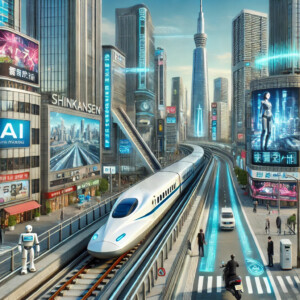
Japan is known for its cutting-edge technology and futuristic cities, impressing visitors from around the world. From high-speed trains to automated systems, the country’s urban centers showcase a blend of convenience, innovation, and efficiency that defines modern life in Japan.
The Shinkansen (bullet train) is a prime example of Japan’s technological prowess. Famous for its speed, punctuality, and comfort, the Shinkansen allows tourists to travel between major cities like Tokyo, Kyoto, and Osaka in record time. Its smooth operation and on-time departures make it a reliable and enjoyable transportation option for travelers, showcasing the peak of Japan’s railway technology.
Japan’s cities are also filled with vending machines that sell everything from drinks to snacks and even hot meals. These machines are found on almost every street corner, providing convenience at all hours of the day. Many vending machines are equipped with touch screens and cashless payment systems, demonstrating Japan’s integration of technology into everyday life.
In cities like Tokyo and Osaka, the urban landscape is a testament to the country’s modernity. Skyscrapers with sleek designs dominate the skyline, while streets are lined with digital billboards and high-tech gadgets. Tourists visiting districts like Shibuya or Roppongi are often amazed by the bustling energy of these tech-forward areas, where innovation meets contemporary city life.
At the same time, robotics and AI are becoming increasingly visible in everyday life. From robots assisting customers in hotels and stores to AI-driven kiosks at train stations, Japan’s use of automation continues to evolve. Visitors can experience firsthand how technology is seamlessly integrated into service industries, offering a glimpse into the future.
Another notable aspect is Japan’s emphasis on environmental sustainability through technology. Many modern buildings in Japan incorporate eco-friendly designs, utilizing energy-efficient systems and sustainable materials. This focus on balancing urban development with environmental care reflects Japan’s forward-thinking approach to city planning.
In conclusion, Japan’s advanced technology and modern cities are a major draw for tourists. Whether riding the Shinkansen, experiencing automated services, or marveling at the sleek urban landscape, visitors are continuously impressed by Japan’s innovative spirit and its ability to blend technology with daily life.
Section 8: Unique Pop Culture

Japan’s pop culture is a global phenomenon, with anime, manga, and video games attracting fans from all over the world. For many foreign tourists, experiencing Japan’s vibrant pop culture firsthand is a major reason for visiting, and districts like Akihabara and Harajuku serve as cultural hubs for this thriving industry.
Akihabara, known as the mecca of anime, manga, and gaming, is filled with shops selling figurines, comics, and collectibles. Fans of Japanese pop culture can immerse themselves in a world of vibrant characters and stories, browsing specialty stores and enjoying themed cafes. The area also boasts large electronics stores and arcades, offering the latest in gaming technology.
Harajuku, on the other hand, is famous for its eclectic street fashion and youth culture. Here, visitors can see cosplayers dressed as their favorite anime or game characters, adding to the area’s playful and creative atmosphere. Harajuku is also home to unique boutiques and fashion shops that showcase Japan’s bold and colorful street styles.
Another key element of Japanese pop culture is cosplay, where fans dress up as characters from anime, manga, or video games. Japan is the birthplace of this global phenomenon, and cosplay events are a common sight at conventions and gatherings. Tourists can participate in or simply enjoy watching cosplayers bring their favorite characters to life.
Japan is also home to a thriving idol culture, with groups like AKB48 and Nogizaka46 leading the way. Idol concerts and events are major attractions, offering fans the chance to interact with their favorite performers. The concept of “supporting” an idol, watching them grow and evolve, is central to this fan-driven culture, and many foreign visitors are fascinated by the unique relationship between idols and their fans.
In addition, karaoke is an essential part of Japan’s pop culture experience. Tourists can enjoy singing their favorite songs, including anime theme songs, in private karaoke rooms. Karaoke bars are found throughout the country, and they provide a fun and interactive way for visitors to connect with Japan’s musical culture.
In conclusion, Japan’s unique pop culture is a major draw for tourists, offering a blend of creativity, fandom, and fun. From the streets of Akihabara to cosplay events and idol concerts, visitors can immerse themselves in the vibrant world of anime, manga, and Japanese entertainment.
Section 9: Convenience of Public Transportation
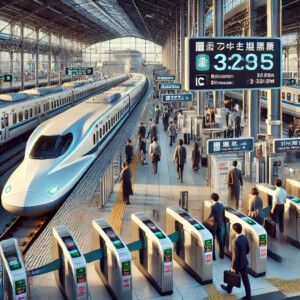
Japan’s public transportation system is globally renowned for its efficiency, punctuality, and convenience, making it easy for tourists to travel across the country. Whether it’s the high-speed Shinkansen or local trains, Japan’s transportation network is designed to ensure smooth and comfortable travel for everyone.
One of the standout features of Japan’s transportation is the punctuality of its trains. Trains, including the Shinkansen, run on time with remarkable precision. This reliability is a huge benefit for tourists, allowing them to plan their schedules without worrying about delays. Whether traveling between major cities like Tokyo and Kyoto or exploring smaller towns, Japan’s trains are known for their speed, comfort, and cleanliness.
Japan’s subway and private railway systems in major cities like Tokyo and Osaka are also highly efficient. These extensive networks connect tourists to popular attractions, shopping districts, and cultural sites with ease. Even in busy urban areas, subway stations are well-organized, with clear signage in multiple languages, making it easy for foreign visitors to navigate.
The use of IC cards such as Suica and Pasmo makes traveling even more convenient. These rechargeable cards allow passengers to quickly and easily board trains, buses, and subways without needing to buy individual tickets for each trip. Tourists can also use these cards for purchases in convenience stores and vending machines, adding to the overall ease of travel.
For those traveling to more remote areas or scenic regions, buses are a reliable option. Local buses connect tourists to beautiful natural sites, hot springs, and rural villages, ensuring that even the most off-the-beaten-path destinations are accessible. Additionally, long-distance highway buses offer affordable travel between cities, making them a popular option for budget-conscious travelers.
Safety and cleanliness are also key aspects of Japan’s public transportation system. Stations and trains are regularly cleaned, and passengers adhere to rules that maintain a quiet and respectful atmosphere. This allows tourists to enjoy a comfortable and stress-free journey throughout the country.
In conclusion, Japan’s public transportation system offers a highly efficient and user-friendly experience for tourists. With its punctual trains, convenient IC cards, multilingual signage, and safe environment, getting around Japan is both easy and enjoyable, allowing visitors to focus on exploring the country’s many attractions.
Section 10: Fusion of Tradition and Modernity
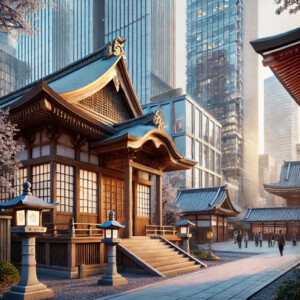
Japan is a country where ancient traditions and modern innovations coexist in harmony, creating a unique cultural blend that fascinates visitors. From the quiet temples of Kyoto to the bustling skyscrapers of Tokyo, Japan offers a seamless fusion of its rich history with cutting-edge technology and design.
Kyoto is often seen as the heart of Japan’s traditional culture, with its well-preserved temples, shrines, and gardens offering a glimpse into the country’s past. Visitors can experience ancient rituals, such as tea ceremonies and visits to shrines, while walking through streets lined with wooden houses and historic buildings. The city’s cultural depth is contrasted with subtle modern influences, blending the old and new.
In contrast, Tokyo is a symbol of Japan’s futuristic side. The city is a sprawling metropolis filled with high-tech infrastructure, towering buildings, and advanced transportation systems. Districts like Shibuya and Ginza are at the forefront of modern design and technology, offering a glimpse into the future. Yet, even here, traditional elements like shrines and festivals remain an integral part of the urban landscape, showcasing the seamless coexistence of Japan’s heritage with modern life.
One of the most striking examples of this fusion is in architecture. Japan is known for its innovative modern buildings that incorporate traditional design elements. Architects like Kengo Kuma are famous for using natural materials and traditional aesthetics in their contemporary designs, creating structures that are both cutting-edge and deeply rooted in Japanese heritage.
This blend of tradition and modernity is also visible in everyday life. In cities, it’s not uncommon to see people dressed in kimono walking past sleek, modern cafés, or to witness traditional festivals being celebrated amidst modern skyscrapers. Japan’s ability to preserve its ancient customs while embracing new trends and technologies makes it a truly unique destination.
In the realm of traditional crafts, Japan continues to honor its artisanal heritage, producing goods such as kimono, pottery, and lacquerware with methods passed down through generations. However, these crafts are often reimagined in modern contexts, with young designers incorporating traditional techniques into contemporary designs. This approach allows tourists to experience the beauty of Japanese craftsmanship in new and exciting ways.
In conclusion, Japan’s fusion of tradition and modernity creates a unique cultural landscape that is both timeless and innovative. Whether exploring the ancient streets of Kyoto or marveling at Tokyo’s futuristic skyline, visitors are continually impressed by Japan’s ability to blend the past with the present, offering an enriching travel experience.
Comment